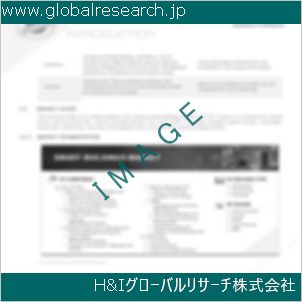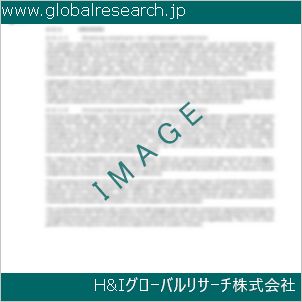Table of Contents
1 Industry Overview of Aluminumbromide
1.1 Definition and Specifications of Aluminumbromide
1.1.1 Definition of Aluminumbromide
1.1.2 Specifications of Aluminumbromide
1.2 Classification of Aluminumbromide
1.3 Applications of Aluminumbromide
1.3.1 Nuclear Application
1.3.2 Non-Nuclear Application
1.4 Industry Chain Structure of Aluminumbromide
1.5 Industry Overview and Major Regions Status of Aluminumbromide
1.5.1 Industry Overview of Aluminumbromide
1.5.2 Global Major Regions Status of Aluminumbromide
1.6 Industry Policy Analysis of Aluminumbromide
1.7 Industry News Analysis of Aluminumbromide
2 Manufacturing Cost Structure Analysis of Aluminumbromide
2.1 Raw Material Suppliers and Price Analysis of Aluminumbromide
2.2 Equipment Suppliers and Price Analysis of Aluminumbromide
2.3 Labor Cost Analysis of Aluminumbromide
2.4 Other Costs Analysis of Aluminumbromide
2.5 Manufacturing Cost Structure Analysis of Aluminumbromide
2.6 Manufacturing Process Analysis of Aluminumbromide
3 Technical Data and Manufacturing Plants Analysis of Aluminumbromide
3.1 Capacity and Commercial Production Date of Global Aluminumbromide Major Manufacturers in 2023
3.2 Manufacturing Plants Distribution of Global Aluminumbromide Major Manufacturers in 2023
3.3 R&D Status and Technology Source of Global Aluminumbromide Major Manufacturers in 2023
3.4 Raw Materials Sources Analysis of Global Aluminumbromide Major Manufacturers in 2023
4 Capacity, Production and Revenue Analysis of Aluminumbromide by Regions, Types and Manufacturers
4.1 Global Capacity, Production and Revenue of Aluminumbromide by Regions 2019-2024
4.2 Global and Major Regions Capacity, Production, Revenue and Growth Rate of Aluminumbromide 2019-2024
4.3 Global Capacity, Production and Revenue of Aluminumbromide by Types 2019-2024
4.4 Global Capacity, Production and Revenue of Aluminumbromide by Manufacturers 2019-2024
5 Price, Cost, Gross and Gross Margin Analysis of Aluminumbromide by Regions, Types and Manufacturers
5.1 Price, Cost, Gross and Gross Margin Analysis of Aluminumbromide by Regions 2019-2024
5.2 Price, Cost, Gross and Gross Margin Analysis of Aluminumbromide by Types 2019-2024
5.3 Price, Cost, Gross and Gross Margin Analysis of Aluminumbromide by Manufacturers 2019-2024
6 Consumption Volume, Consumption Value and Sale Price Analysis of Aluminumbromide by Regions, Types and Applications
6.1 Global Consumption Volume and Consumption Value of Aluminumbromide by Regions 2019-2024
6.2 Global and Major Regions Consumption Volume, Consumption Value and Growth Rate of Aluminumbromide 2019-2024
6.3 Global Consumption Volume and Consumption Value of Aluminumbromide by Types 2019-2024
6.4 Global Consumption Volume and Consumption Value of Aluminumbromide by Applications 2019-2024
6.5 Sale Price of Aluminumbromide by Regions 2019-2024
6.6 Sale Price of Aluminumbromide by Types 2019-2024
6.7 Sale Price of Aluminumbromide by Applications 2019-2024
6.8 Market Share Analysis of Aluminumbromide by Different Sale Price Levels
7 Supply, Import, Export and Consumption Analysis of Aluminumbromide
7.1 Supply, Consumption and Gap of Aluminumbromide 2019-2024
7.2 Global Capacity, Production, Price, Cost, Revenue, Supply, Import, Export and Consumption of Aluminumbromide 2019-2024
7.3 USA Capacity, Production, Price, Cost, Revenue, Supply, Import, Export and Consumption of Aluminumbromide 2019-2024
7.4 EU Capacity, Production, Price, Cost, Revenue, Supply, Import, Export and Consumption of Aluminumbromide 2019-2024
7.5 China Capacity, Production, Price, Cost, Revenue, Supply, Import, Export and Consumption of Aluminumbromide 2019-2024
7.6 Japan Capacity, Production, Price, Cost, Revenue, Supply, Import, Export and Consumption of Aluminumbromide 2019-2024
8 Major Manufacturers Analysis of Aluminumbromide
8.1 Manufacturer One
8.1.1 Company Profile
8.1.2 Product Picture and Specifications
8.1.2.1 Type I
8.1.2.2 Type II
8.1.2.3 Type III
8.1.3 Capacity, Production, Price, Cost, Gross and Revenue
8.1.4 Contact Information
8.2 Manufacturer Two
8.2.1 Company Profile
8.2.2 Product Picture and Specifications
8.2.2.1 Type I
8.2.2.2 Type II
8.2.2.3 Type III
8.2.3 Capacity, Production, Price, Cost, Gross and Revenue
8.2.4 Contact Information
8.3 Manufacturer Three
8.3.1 Company Profile
8.3.2 Product Picture and Specifications
8.3.2.1 Type I
8.3.2.2 Type II
8.3.2.3 Type III
8.3.3 Capacity, Production, Price, Cost, Gross and Revenue
8.3.4 Contact Information
8.4 Manufacturer Four
8.4.1 Company Profile
8.4.2 Product Picture and Specifications
8.4.2.1 Type I
8.4.2.2 Type II
8.4.2.3 Type III
8.4.3 Capacity, Production, Price, Cost, Gross and Revenue
8.4.4 Contact Information
8.5 Manufacturer Five
8.5.1 Company Profile
8.5.2 Product Picture and Specifications
8.5.2.1 Type I
8.5.2.2 Type II
8.5.2.3 Type III
8.5.3 Capacity, Production, Price, Cost, Gross and Revenue
8.5.4 Contact Information
…
9 Marketing Trader or Distributor Analysis of Aluminumbromide
9.1 Marketing Channels Status of Aluminumbromide
9.2 Traders or Distributors with Contact Information of Aluminumbromide by Regions
9.3 Ex-work Price, Channel Price and End Buyer Price Analysis of Aluminumbromide
9.4 Regional Import, Export and Trade Analysis of Aluminumbromide
10 Industry Chain Analysis of Aluminumbromide
10.1 Upstream Major Raw Materials Suppliers Analysis of Aluminumbromide
10.1.1 Major Raw Materials Suppliers with Contact Information Analysis of Aluminumbromide
10.1.2 Major Raw Materials Suppliers with Supply Volume Analysis of Aluminumbromide by Regions
10.2 Upstream Major Equipment Suppliers Analysis of Aluminumbromide
10.2.1 Major Equipment Suppliers with Contact Information Analysis of Aluminumbromide
10.2.2 Major Equipment Suppliers with Product Pictures Analysis of Aluminumbromide by Regions
10.3 Downstream Major Consumers Analysis of Aluminumbromide
10.3.1 Major Consumers with Contact Information Analysis of Aluminumbromide
10.3.2 Major Consumers with Consumption Volume Analysis of Aluminumbromide by Regions
10.4 Supply Chain Relationship Analysis of Aluminumbromide
11 Development Trend of Analysis of Aluminumbromide
11.1 Capacity, Production and Revenue Forecast of Aluminumbromide by Regions and Types
11.1.1 Global Capacity, Production and Revenue of Aluminumbromide by Regions 2024-2029
11.1.2 Global and Major Regions Capacity, Production, Revenue and Growth Rate of Aluminumbromide 2024-2029
11.1.3 Global Capacity, Production and Revenue of Aluminumbromide by Types 2024-2029
11.2 Consumption Volume and Consumption Value Forecast of Aluminumbromide by Regions, Types and Applications
11.2.1 Global Consumption Volume and Consumption Value of Aluminumbromide by Regions 2024-2029
11.2.2 Global and Major Regions Consumption Volume, Consumption Value and Growth Rate of Aluminumbromide 2024-2029
11.2.3 Global Consumption Volume and Consumption Value of Aluminumbromide by Types 2024-2029
11.2.4 Global Consumption Volume and Consumption Value of Aluminumbromide by Applications 2024-2029
11.3 Supply, Import, Export and Consumption Forecast of Aluminumbromide
11.3.1 Supply, Consumption and Gap of Aluminumbromide 2024-2029
11.3.2 Global Capacity, Production, Price, Cost, Revenue, Supply, Import, Export and Consumption of Aluminumbromide 2024-2029
11.3.3 USA Capacity, Production, Price, Cost, Revenue, Supply, Import, Export and Consumption of Aluminumbromide 2024-2029
11.3.4 EU Capacity, Production, Price, Cost, Revenue, Supply, Import, Export and Consumption of Aluminumbromide 2024-2029
11.3.5 China Capacity, Production, Price, Cost, Revenue, Supply, Import, Export and Consumption of Aluminumbromide 2024-2029
11.3.6 Japan Capacity, Production, Price, Cost, Revenue, Supply, Import, Export and Consumption of Aluminumbromide 2024-2029
12 New Project Investment Feasibility Analysis of Aluminumbromide
12.1 New Project SWOT Analysis of Aluminumbromide
12.2 New Project Investment Feasibility Analysis of Aluminumbromide
13 Conclusion of the Global Aluminumbromide (CAS 7727-15-3) Industry 2024 Market Research Report
| ※参考情報 臭化アルミニウム(Aluminium bromide、CAS番号7727-15-3)は、アルミニウムと臭素からなる無機化合物です。化学式はAlBr₃で、一般には白色の固体として存在しますが、様々な形態を取ることができます。臭化アルミニウムは、特に有機合成や触媒反応において重要な役割を持つ化合物です。 臭化アルミニウムの特徴の一つは、その強い Lewis 酸性です。このため、さまざまな分子と反応し、電子を受け入れる能力があります。特に、有機化学の分野では、アルケンのヒドロブロミネーション反応や、フリーデル・クラフツ反応などにおいて触媒として用いられます。この反応性の高さは、臭化アルミニウムがさまざまな化学プロセスで利用される要因となっています。 臭化アルミニウムにはいくつかの形態があります。主に無水物と水和物に分けられます。無水物では、アルミニウムと臭素が1:3の比率で結合しており、化学反応において非常に高い活性を示します。一方で、二水和物の形態でも存在し、こちらは通常は水と反応して活性が低下します。これらの形態の違いによって、用途や反応特性が変わるため、適切な選択が重要です。 臭化アルミニウムの主要な用途の一つは、有機合成における触媒としての利用です。特に芳香族化合物の合成や、アルケンとの反応によるブロモ化反応、さらにはアミンのプロトン化にも使用されます。また、金属塩や無機化合物の合成においても触媒として機能し、反応を促進させることができます。 加えて、臭化アルミニウムは試薬としても用いられています。特に化学分析や合成プロセスにおいて、特定の反応環境を提供し、求められる生成物を得るために重要な役割を果たします。また、化学工業においても、さまざまな製品の製造過程において利用されています。 関連技術について考えると、臭化アルミニウムはその触媒特性を活かした反応技術の研究が進んでいます。これにより、新しい合成経路の開発や効率的な反応条件の最適化が行われています。また、触媒の再利用に関する研究も進められており、環境に優しい化学プロセスを目指す取り組みが行われています。 さらに、臭化アルミニウムは特定の分子と相互作用する際のメカニズムや、反応の進行における中間体の特徴について多くの研究がなされており、これにより有機化学の理解が深まることが期待されています。これらの研究は、触媒の改良や新しい合成手法の開発に寄与し、化学の先端技術としての位置を確立しています。 安全性に関して言えば、臭化アルミニウムは刺激性が強く、皮膚や目、呼吸器に対して危険を伴うことがあるため、取り扱いには十分な注意が必要です。化学実験や工業で使用する際には、安全対策を講じ、適切な保護具を着用することが求められます。 総じて、臭化アルミニウムはその強い触媒特性や反応性によって、多岐にわたる化学分野での利用が期待されています。今後の研究や技術開発により、新たな用途が見つかり、より効率的で持続可能な化学プロセスの実現に貢献していくことでしょう。 |
❖ 免責事項 ❖
http://www.globalresearch.jp/disclaimer












